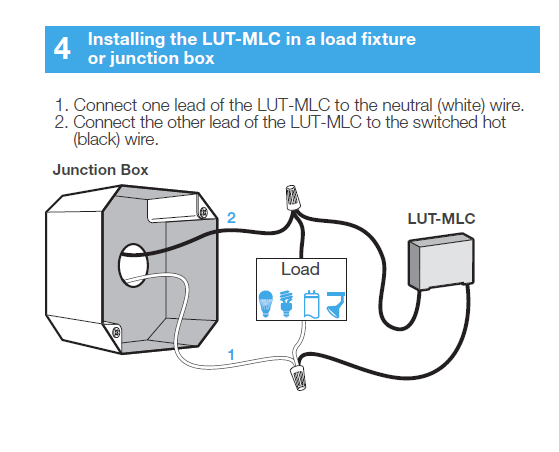I have an LED light fixture I’m trying to get to work with the Inovelli Red Series dimmer. My home has no neutral wire.
The fixture has the following specs:
Voltage: 85-265 Volts
Power: 36 Watts
Despite being over the 25 Watt requirement, the fixture would flicker like crazy and then power off, power on and flicker again. The dimmer would also refuse to pair or function, with the LED flashing red, blue, and green. I assumed I would need a bypass, and I purchased one from Lutron (LUT-MLC). I installed it at the back of the fixture, using wire nuts. One end is connected to the hot wire (black, confirmed hot with a tester) from the junction box in the ceiling, and that is wired to the black wire on the fixture. All three are connected under a wire nut. The other end of the bypass is connected to the white wire from the fixture and the junction box. The instructions for the bypass , and the other is connected to the white wire. My fixture has a green wire, labeled as neutral. Per the bypass instructions, I’m to include this with the white wires.
After powering the circuit back on, I was able to pair the dimmer with my Hubitat, and I can power the fixture on with no flickering. However, when I set the dimmer to off, the fixture intermittently flickers.
What am I doing wrong? I went with Inovelli red, which is honestly overkill for this. I don’t want to do anything but power the led fixture on and off with an integration to my smart home, but I went with it because I can’t find any “no neutral required” switches on the market. I was disappointed to find I still needed to install a bypass, but did so. However, it still doesn’t solve the problem.
Am I wiring something incorrectly, or is the bypass just not the right kind?

